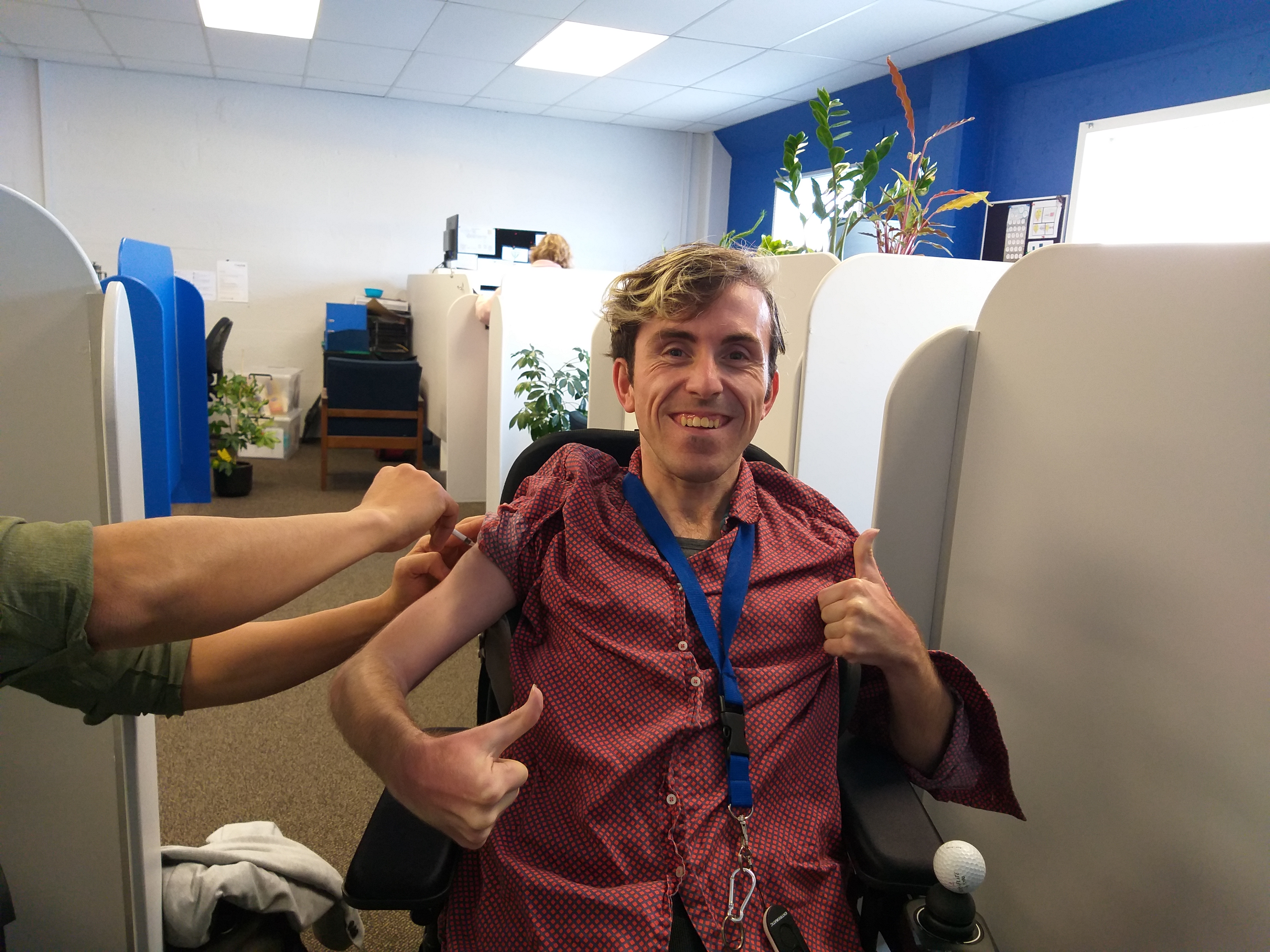
Dispelling doubts
... Enabling Love
chief executive
Joshua Perry
overcame his
concerns and
received his first
and second Covid-
19 Pfizer-BioNTech
vaccine at the
Community Care
Trust at the start
and end of July.
PHOTO: SUPPLIED
Getting the Covid-19 Pfizer-BioNTech vaccine is an easy choice for many, but for others doubts need to be overcome.
Dunedin disabilities advocate and Enabling Love chief executive Joshua Perry, who has cerebral palsy, said he had some hesitations about the vaccine at first.
‘‘The reason why I was hesitant was because there was no information about what ingredients were in the vaccine.’’
Another concern was understanding how the vaccine was produced, Mr Perry said.
‘‘I wanted to know what the process was from start to finish.’’
However, he decided to go ahead with his vaccinations.
‘‘I said to myself, ‘we have to get on with our lives, we can’t be in this state of affairs forever’.’’
He took the initiative for the sake of others in the disabled community , and was able to report no side effects from the vaccine.
Robyn Broughton, of Mosgiel, said after reading ‘‘a lot of conspiracy theories’’and ‘‘rubbish’’ on social media, it took her eight weeks to pluck up the courage to get her second vaccine.
After she had her first vaccination, she made the mistake of looking at posts on social media.
‘‘My logical mind said ‘don’t listen to this’.’’
She was ‘‘not a shrinking violet’’ but burst into tears thinking about getting her second vaccination.
‘‘I was that terrified,’’ Mrs Broughton said.
‘‘And then I started looking at the science, and my logical mind kicked in.’’
She spoke to her doctor, a local pharmacy owner and a friend who was an epidemiologist at the University of Otago.
‘‘I thought ‘hang on a minute, don’t get caught up in the social media conspiracy theories, actually look at the science’.’’
Mrs Broughton had now received her second vaccination with no problems, and her advice to others was to talk to their local medical professional.
What’s in the vaccine?
University of Otago Wellington Department of Pathology and Molecular Medicine immunologist and senior lecturer Dr Dianne Sika-Paotonu said the Pfizer-BioNTech Covid-19 vaccine ingredients were mRNA (messenger ribonucleic acid) which was the active ingredient for the vaccine that carried instructions for making the SARS-CoV-2 spike protein, four different types of lipids that helped with entry into the body’s immune cells, sugar to protect the mRNA from cold temperature storage, and four different types of salts to maintain pH levels.
There was no live virus in the vaccine, and you could not catch Covid-19 from the vaccine, she said.
The vaccine can be made quickly in large laboratories and the process involves testing and safety checks along the way.
A DNA source kept in very cold storage is used to make small rings of DNA called plasmids.
A section of the plasmid contains DNA instructions for our body to build immune cells against Covid-19.
Large quantities of these plasmids are made using bacterial cultures and a fermentation process.
The plasmid section carrying the DNA instructions can be removed and purified.
This can then be used to make a matching mRNA strand (a process called transcription).
These mRNA pieces are then isolated, purified and combined with the other vaccine ingredients.
| Article |
| View |














